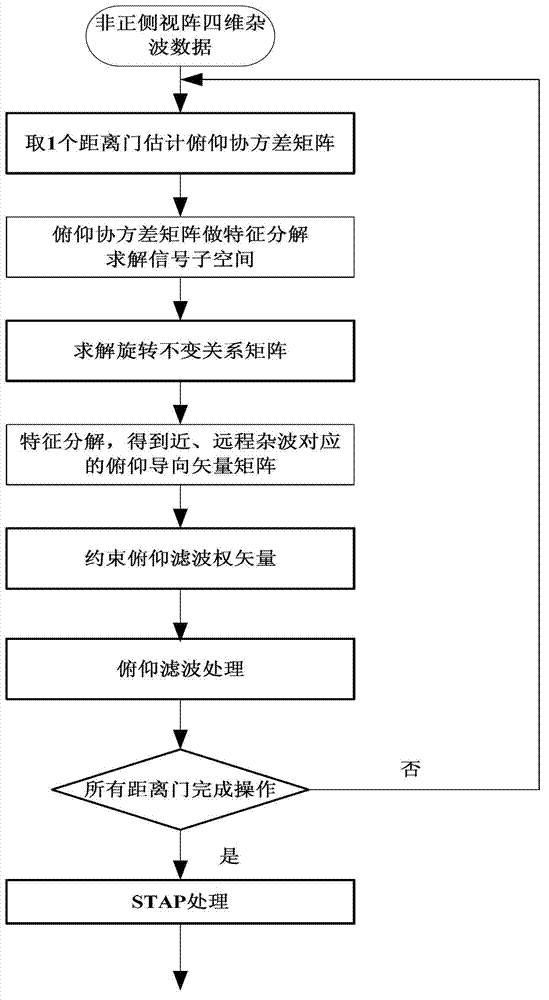ESPRIT algorithm based short-range clutter suppression method for airborne radar
An airborne radar and short-range clutter technology, applied in the field of radar, can solve the problem of distance non-stationarity being difficult to be suppressed, and achieve the effect of overcoming the decline of clutter suppression performance, the small amount of calculation, and the enhancement of stability.
- Summary
- Abstract
- Description
- Claims
- Application Information
AI Technical Summary
Problems solved by technology
Method used
Image
Examples
Embodiment Construction
[0034] Control attached figure 1 , the specific implementation steps of the present invention are as follows:
[0035] Step 1: Simulate the 4D clutter data of the airborne radar forward-looking array according to the Ward clutter model X N×M×P×L , where N is the number of array elements in the pitch direction, M is the number of array elements in the azimuth direction, P is the number of pulses, and L is the number of range gates. The parameters N and M depend on the requirements of the degree of freedom of the radar system, P, The size of L is selected to meet the requirements of Brennan's criterion.
[0036] Step 2, use the rotation invariant subspace algorithm, ESPRIT algorithm, to sequentially analyze the four-dimensional clutter data X of the forward-looking array antenna N×M×P×L For each range gate in the pitch direction, DOA estimation is performed to obtain the antenna array manifold matrix A(θ),θ∈[0,90°]:
[0037] (2.1) Take the 4D clutter data X of the forward-loo...
PUM
 Login to View More
Login to View More Abstract
Description
Claims
Application Information
 Login to View More
Login to View More - R&D
- Intellectual Property
- Life Sciences
- Materials
- Tech Scout
- Unparalleled Data Quality
- Higher Quality Content
- 60% Fewer Hallucinations
Browse by: Latest US Patents, China's latest patents, Technical Efficacy Thesaurus, Application Domain, Technology Topic, Popular Technical Reports.
© 2025 PatSnap. All rights reserved.Legal|Privacy policy|Modern Slavery Act Transparency Statement|Sitemap|About US| Contact US: help@patsnap.com



